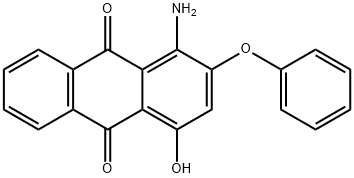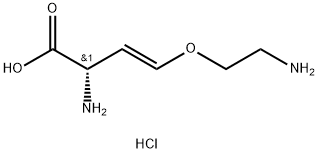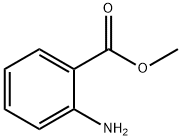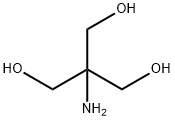Disperse Red 60
- CAS NO.:17418-58-5
- Empirical Formula: C20H13NO4
- Molecular Weight: 331.32
- MDL number: MFCD00287005
- EINECS: 241-442-6
- SAFETY DATA SHEET (SDS)
- Update Date: 2024-12-18 14:15:32

What is Disperse Red 60?
Chemical properties
deep red powder
The Uses of Disperse Red 60
Disperse Red 60 can be used as anthraquinone disperse dyes.
Preparation
In alkaline medium 1-Amino-2-bromo-4-hydroxyanthracene-9,10-dione?and phenol condensation
General Description
Fine deep-red powder with white specks.
Air & Water Reactions
Insoluble in water.
Reactivity Profile
An amine. Amines are chemical bases. They neutralize acids to form salts plus water. These acid-base reactions are exothermic. The amount of heat that is evolved per mole of amine in a neutralization is largely independent of the strength of the amine as a base. Amines may be incompatible with isocyanates, halogenated organics, peroxides, phenols (acidic), epoxides, anhydrides, and acid halides. Flammable gaseous hydrogen is generated by amines in combination with strong reducing agents, such as hydrides.
Fire Hazard
Flash point data for Disperse Red 60 are not available. Disperse Red 60 is probably combustible.
Flammability and Explosibility
Non flammable
Synthesis
1-Amino-4-hydroxy-2-phenoxyanthraquinone is prepared from 1-amino-2-chloro- (or -2-bromo-) 4-hydroxyanthraquinone and phenolate. This process was improved .
Properties and Applications
Bright red blue light. Purple powder evenly. Soluble in 50% of acetone for red, soluble in four hydrogenated naphthalene and xylene. The strong sulfuric acid solution for yellow, the alkali sensitive. Dyeing met in the copper, iron ion color becomes shallow. This product used for polyester and their blended fabric dyeing and printing, for the bright red light blue light, the sun good fastness, weeks of high temperature and high pressure, the dyeing temperature is 125 ~ 130 ℃, good levelness. Dye polyester/ Wool blended fabric of wool with less color . The sublimation fastness is poorer, melt method only appropriate spell dye light color. When two vinegar fiber dyed with polyester similar color shade, the dyeing speed slow. Good levelness, but dye deep the gender is poorer. Three vinegar is dyed fiber dyed deep sex is better. Dyeing nylon is blue color, the dyeing speed is slow, levelness and dye deep sex medium. So when a black silk ribbon with colored light blue, the dyeing rate is low, soaping fastness is bad two this product can be used for nylon polyester fabric or the direct printing, be not white color, suitable for transfer printing. To calcium, iron ion is very sensitive, dye bath these ions are colored light slant blue:
| Standard | Ironing Fastness | Light Fastness | Persperation Fastness | Washing Fastness | |||
| Fading | Stain | Fading | Stain | Fading | Stain | ||
| AATCC | 2-3 | 6-7 | 5 | 5 | 5 | 5 | |
| ISO | 4 | 2-3 | 7 | 5 | 5 | 4-5 | 4 |
Properties of Disperse Red 60
| Melting point: | 185°C |
| Boiling point: | 570.3±50.0 °C(Predicted) |
| Density | 1.438 |
| vapor pressure | 0Pa at 25℃ |
| solubility | DMSO (Slightly), Methanol (Very Slightly) |
| form | Solid |
| pka | 6.70±0.20(Predicted) |
| color | Very Dark Red to Very Dark Purple |
| Water Solubility | 16.42ug/L(25 ºC) |
| Stability: | Stable. Combustible. Incompatible with strong oxidizing agents. |
| NIST Chemistry Reference | 1-Amino-4-hydroxy-2-phenoxy-9,10-anthraquinine(17418-58-5) |
| EPA Substance Registry System | C.I. Disperse Red 60 (17418-58-5) |
Safety information for Disperse Red 60
Computed Descriptors for Disperse Red 60
Disperse Red 60 manufacturer
Anand International
Amogh Chemicals Pvt Ltd
Jaffs Dyechem Private Limited
SBL Colortech Pvt Ltd
New Products
(S)-3-Aminobutanenitrile hydrochloride 4-Methylphenylacetic acid N-Boc-D-alaninol N-BOC-D/L-ALANINOL Tert-butyl bis(2-chloroethyl)carbamate 3-Morpholino-1-(4-nitrophenyl)-5,6-dihydropyridin- 2(1H)-one Furan-2,5-Dicarboxylic Acid Tropic acid 1-Bromo-3,5-Di-Tert-Butylbenzene S-2-CHLORO PROPIONIC ACID ETHYL ISOCYANOACETATE 2-Bromo-1,3-Bis(Dimethylamino)Trimethinium Hexafluorophosphate 4-IODO BENZOIC ACID 3-NITRO-2-METHYL ANILINE 1-(2,4-DICHLOROPHENYL) ETHANAMINE (2-Hydroxyphenyl)acetonitrile 4-Bromopyrazole 2-(Cyanocyclohexyl)acetic acid 4-methoxy-3,5-dinitropyridine 1-(4-(aminomethyl)benzyl)urea hydrochloride 2-aminopropyl benzoate hydrochloride diethyl 2-(2-((tertbutoxycarbonyl)amino) ethyl)malonate tert-butyl 4- (ureidomethyl)benzylcarbamate Ethyl-2-chloro((4-methoxyphenyl)hydrazono)acetateRelated products of tetrahydrofuran








You may like
-
 17418-58-5 Disperse red 60 98%View Details
17418-58-5 Disperse red 60 98%View Details
17418-58-5 -
 Disperse red 60 98%View Details
Disperse red 60 98%View Details -
 Disperse Red 60 95% (HPLC) CAS 17418-58-5View Details
Disperse Red 60 95% (HPLC) CAS 17418-58-5View Details
17418-58-5 -
 Disperse Red 60 CAS 17418-58-5View Details
Disperse Red 60 CAS 17418-58-5View Details
17418-58-5 -
 Disperse red 60 17418-58-5 98%View Details
Disperse red 60 17418-58-5 98%View Details
17418-58-5 -
 Disperse red 60 98%View Details
Disperse red 60 98%View Details
17418-58-5 -
 LATYL CERISE N CAS 17418-58-5View Details
LATYL CERISE N CAS 17418-58-5View Details
17418-58-5 -
 DISPERSE RED 60 (SAMARON PINK FBL) CAS 17418-58-5View Details
DISPERSE RED 60 (SAMARON PINK FBL) CAS 17418-58-5View Details
17418-58-5